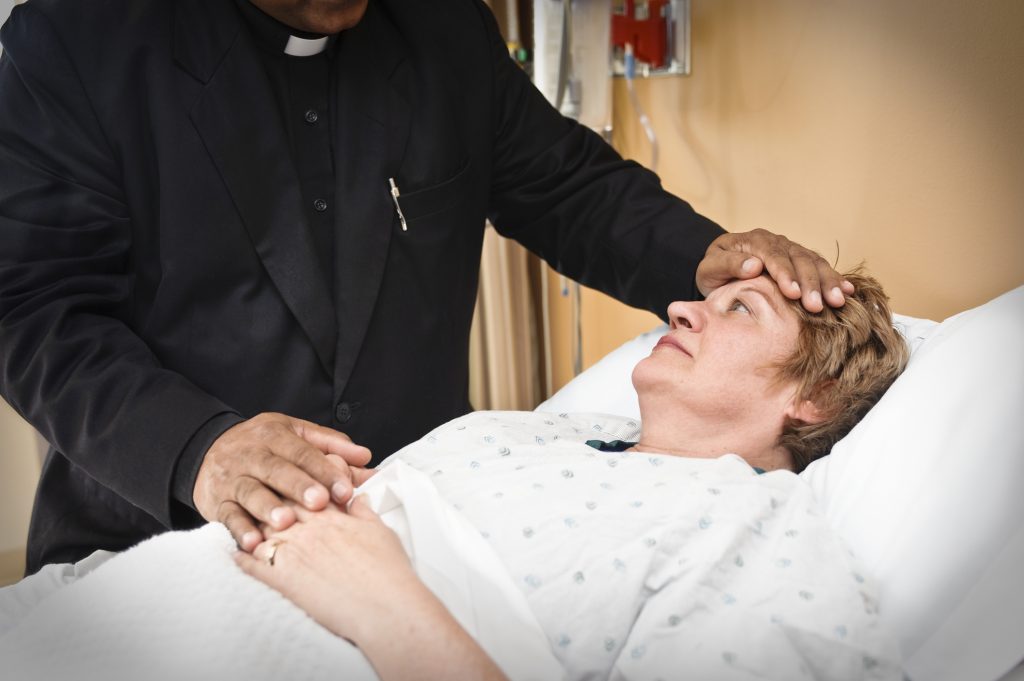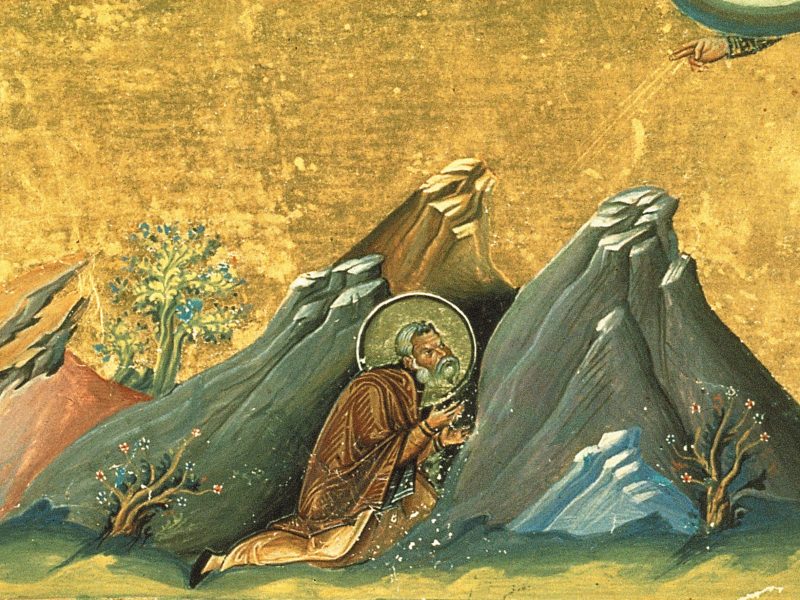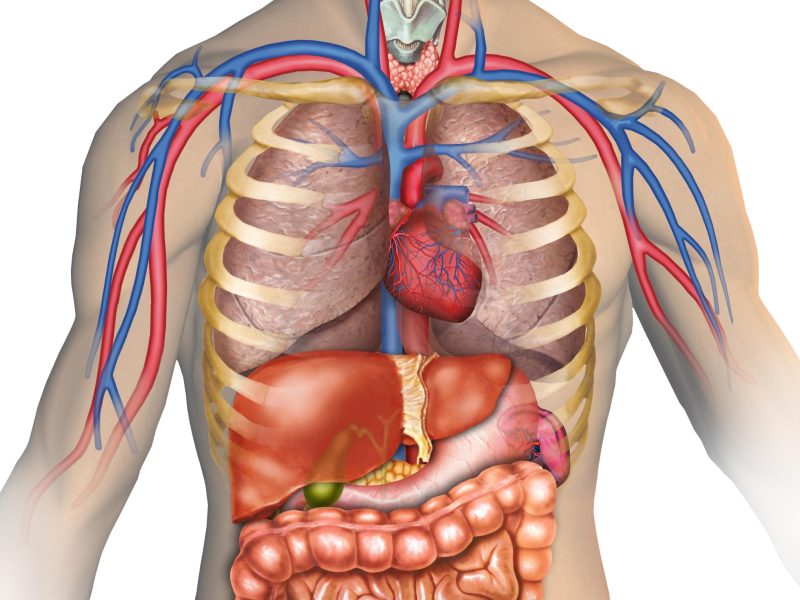by Vito Čapeta
Vito Čapeta is a master student in bioethics at Regina Apostolorum Pontifical Athenaeum. This essay was originally written in Italian but has been translated into English. The original Italian version is included at the bottom.
When we speak of Catholic theology, it is based on revelation. For man to have access to supernatural truths there is a need for the revelation of God the Creator who reveals the inaccessible hidden mysteries that man could never have known. These truths man recognizes not only with natural reason, but with reason enlightened by faith (ratio fide illustrata). That is, man adheres to divine authority, believes the things he has said to be true, and now possesses them in his knowledge because he has received them. He received them in an act of obedience to faith. Supernatural truth is Trinitarian Christocentrism whereby the Old Testament (from Genesis onwards) is Christologically oriented towards the future and its fulfillment, even though Christ had not yet come. Jesus says that the Pharisees did not understand the scriptures though because “You search the scriptures, because you think that in them you have eternal life; and it is they that bear witness to me; yet you refuse to come to me that you may have life” (John 5:39-40). In this way he showed that the Old Testament spoke of Him.
Christ is the new Adam. Christ became incarnate to save us and reconcile us with the Father, to be a model of sanity, so that we might become partakers of His nature. Revelation begins with the Old Testament, but finds its fulfillment and fullness in Jesus and the New Testament. Christ is the structuring and central principle of revelation, hence of faith; hence, of theology because theology is the science of faith. Now Christ is the basis of Catholicism.
Consequence: The synthetic ontology of Jesus Christ as it is the source of all the fundamental bipolarity of Catholicism expressed in the Catholic principle of et-et. This Catholic principle of et-et (both-and) illuminates all Catholic doctrine. This is why we must keep things together without falling into extremism and heresies. (e.g.: ‘Eucharist is only a meal’, no! It is also sacrifice! Jesus is only God….No! He is also man! Faith alone is enough….no also works of charity! Faith alone = fideism, reason alone = rationalism, it does not work! Love! Yes, but justice too! Man is only matter….no! He is also spirit incarnate!”) This view is also the basis for discerning action in the bioethical sphere, but I will come to that later.

Now I want to start from Christology and theology to correlate the Catholic criterion of et-et with bioethical cases. So Jesus the Son of God the Father, Creator, and has two natures: Christ is both God and man, but here the axiological difference comes in, which means that one thing is primary and one secondary, but that does not mean if it is secondary that it is optional. Without something else there is no primary. Although the divine nature is primary and the human nature secondary, this does not mean we can remove human nature without a problem. No Jesus is both God and man, et-et. If there is polarization then there is a problem. If we help the poor seven hours a day and pray one minute… something is wrong. We need both action and contemplation. Jesus is not only man, he is not also God because if he were not God he could not save us. He is also not only God, he must also be a man because quod non asumptur non sanatur (what is not assumed is not saved). If you say that Christ’s rational soul is not there, then your soul is not saved. If God did not assume the flesh He could not save us! So Christ became man so that as man he might leave us as an example and as divine himself reconcile us with God the Father and Creator. He accomplished this with a perfect sacrifice on the cross for all ages. The horizontal part of the cross signifies the reconciliation of all peoples and the vertical part signifies reconciliation with God the Creator.
“Ut omnes unum sint.” (May they be one, just as I and Father are one, John 17:21). = “Consubstantiale Patris per quem omnia facta sunt” (consubstantial with the Father, through whom all things were made). Once the sacrifice of Jesus our Master, Way, Truth and Life, has been made all men become children of God and their dignity is restored. This will also have consequences on the bioethical level. This is why Christ is the basis of Catholicism and every other criterion, both doctrinal and moral, derives from Him. Because we speak of the ontological dignity and equality of all men without distinction of race, language, and social class. The very life of God is for man and in man ‘My Father is your Father’. We are children of the God who created us and Jesus himself who became incarnate. There is a new concept of personhood in Jesus Christ, God the Father and the Holy Spirit. Hence the human being is in itself something much greater, something elusive, something inexplicable, and something mysterious that finds its origin and end in God: hence, THE SACREDNESS OF LIFE AS AN INDISPENSABLE GIFT OF MAN AS A GIFT OF GOD. “Et in Spiritum Sanctum Dominum et vivificantem” (and in the Holy Spirit, the Lord and Giver of Life).

Starting from this new concept of the person that finds its origin in Jesus Christ, in the natural law, and in love, and considering both the life, death and resurrection of Jesus, and the Catholic Christocentric principle of et-et, we can enter into a discussion of bioethics. The activity of the doctor takes on another dimension: the figure of the doctor is Christus Medicus. He becomes a deacon, a servant, the one who serves because Christ did not come to be served, but to serve others and God the Father. We can also consider how Christ welcomes everyone. Jesus heals the blind, lepers, the mute, the lame the paralytic; he spoke and he listened. In fact, it is not enough just to be a good doctor, but one must have the attitude of listening, of closeness, of taking charge of the patient’s suffering as if he himself were in his position. He must have empathy, compassion, and interest in the patient’s story and his illness, just as Jesus has an interest in each one of us. Never reduce the patient to his illness, just as Jesus never identifies us with our personal sins.
So too, contemporary medicine is invited to be healing medicine and called to put the last ounce of strength towards the true good of the patient in whatever state and age – regardless of the diagnosis and regardless of the pathology that might occur in the prenatal diagnosis. Even if the child lives only ten days because of pathology, parents and neonatal doctors must welcome the new life, because life itself has sacredness from its beginning to its end. Life is already perfect; it is already acted; it is already lived! It is worthy of being lived even if only ten days because to live is already to have lived. This child, this newborn child, is so wanted in the eyes of God the Creator. He came into the world because God the Creator created his soul. Without God the Creator there is no life. But when God has created, then what he is already created is already sacred. He is already worthy to live as a child of God in Jesus Christ, even if he lives only an hour or ten days or 20 years.
Looking again at Jesus I want to return to applying the Catholic Christocentric principle of et-et in the field of bioethics. For here if man is body psyche and spirit and if Jesus welcomes everyone then a patient, who is the main subject in the doctor-patient relationship and towards whom the doctor is always obliged to act according to the principle of beneficence and not maleficence, cannot be considered only in view of his organic or intellectual functionality. Hence man is his body, but not only. Equally man possesses intellect and will, but not only that. So man is body and spirit together with his intellectual-volitional faculties: et-et.
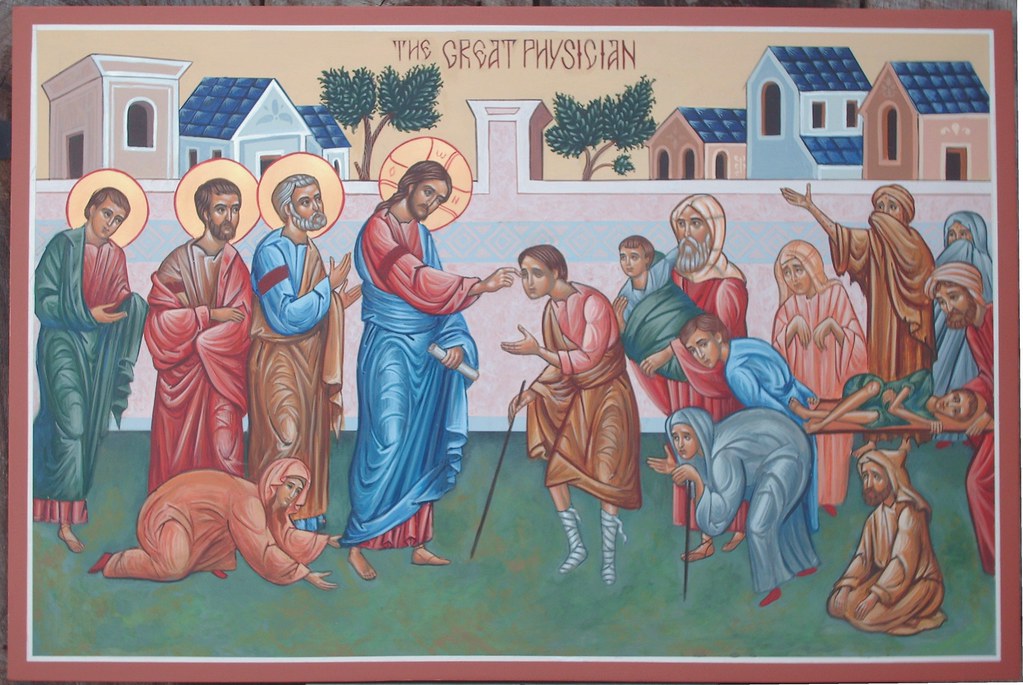
The patient must never look at himself solely from the perspective of the performance of his bodily functions or higher intellectual volitional functions. If his body does not function, then there is a spiritual dimension, but if he does not show complex intellectual and volitional activities, then there is his body that is alive and functioning, albeit minimally. Here is Catholic et-et. Does the body not function? It is still worthy of care. Does the intellect or the will not function? It is still worthy of being cured. Because a person in his complexity is ‘et‘ body ‘et‘ spirit’ – a doctor must act in this perspective.
In light of this here are some bioethical examples considered from the perspective of the Catholic Christocentric synthetic principle of et-et:
A) The patient is aware of everything, but cannot move and perform many activities because of the aphasia of the permanent vegetative state his body. His life is no less worthy and therefore the person cannot be considered only in view of his external behavior. As such, he deserves the psychological and spiritual accompaniment of others. The person is his or her body, but it is not only his or her body, because he or she possesses within him or herself a spiritual dimension together with his or her consciousness that transcends bodily and organic functionalistic aspects. For example, imagine a patient who is fully conscious but unable to move.
If I ask him to close his eyes and imagine he is playing tennis and I look into his brain – you notice that there is also a specific part of the brain right in the middle that becomes active. Not that this part is special for playing tennis, but it is a part that is a motor area – it is important for sequencing motor planes, such as playing football. It appears that the patient is behaviorally in a vegetative state, but in the functional MRI the patient was actually more than vegetative, he was in a minimally conscious state.
That is why the physician must have in mind both realities together according to the operational principle of et-et. So even if the patient does not show certain physical behavioral activities, it cannot be reduced to that because it transcends his body: If the body does not function, this does not mean being less of a person.
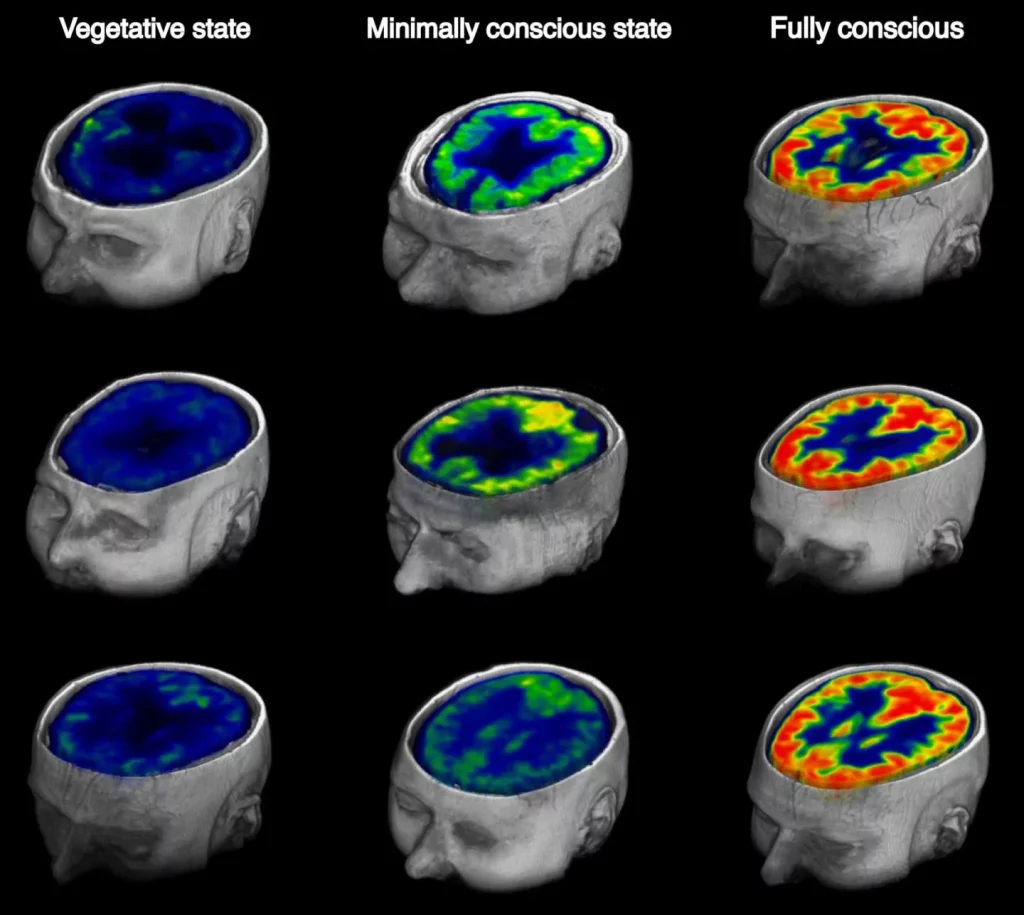
B) The patient is in a coma without any consciousness or is clinically dead due to cardiac arrest. Even if the person does not show even the slightest state of consciousness and is unable to perform the higher activities of mind due to coma or due to clinical death from cardiac arrest, this person continues to be a person. For example, there was a case in Italy where an atheist person had cardiac rest and ended up in resuscitation (thank goodness he was already in hospital) and was clinically dead for five minutes. When he woke up in the hospital, he asked the doctors what happened to him. They told him he fell asleep, but now everything was fine. He said, look, I don’t know what happened, but I was in a tunnel and there was a light and I realized that this was love. Here again the person is not just what I see in front of me, but something more. It is someone! He continues to be, continues to live, and is always someone and not something, regardless of functionality.
So one must always have an integral view of the person and see him or her in his or her unity. One must have a healthy anthropology that certainly derives from Catholic theology and which is based on the synthetic principle of et-et. One must never look at the person only in view of his or her functionality because we see from these two examples that the person is always more than what he or she appears or does. One must have a welcoming attitude like Jesus Christ, Christus Medicus. Always accompany ‘et‘ those who cannot perform complex bodily activities ‘et‘ those who cannot perform complex intellectual-volitional higher activities. There must never be discrimination of healthcare on the basis of pathology. On the contrary, there must be an attitude of acceptance that finds its dimension in the Catholic theological principle of et-et.

I said above that Christ is both God and man, but here the axiological difference comes in: one thing is primary and one thing is secondary, but that does not mean if it is secondary that it is optional. Without the secondary there is no primary. As there are two natures, the divine nature is certainly superior to human nature. However, saying that human nature is inferior to divine nature does not mean that human nature is optional or less important. By this logic man is his body, but also in his soul which possesses the intellectual and volitional faculties. Both are important. Without one there is no other. Neither dimension is optional or less important.
So we must take care of both body and soul. It is not good to say that man is only spirit and the body does not matter. Likewise it is not good to say that man is only body and thus neglect the spiritual dimension (soul and psyche). Certainly the soul as directly created by God is primary and the body is secondary, but that does not mean it is optional. We always speak of the salvation of souls. However, souls are not saved on their own by a simple act of will but are saved with the body and in the body and through the body.
Through the personal body, given by God the Creator, we do works of charity (which take into account our neighbor in its entirety as a person composed of body – psyche – soul) and according to these works of charity we resonate in eternity that Christ, the New Adam, has opened up to us again through his divinity and humanity and through his death and resurrection. Christ has shown us “et-et” in the resurrection because what matters is not only the soul, but also our body which will be glorified, Christified, and resurrected. “Et” soul “et” body.
This is why the body is not just something functional and trivial. It is why every medical intervention is of great value and never remains indifferent because it is a human act that is addressed to the other man who is a sharer in the nature of the risen Christ. It is why every act also has resonance in eternity. Christ not only dies, but is Savior of the dead and victor over death so that we may live and be one with God the Father and Creator in the Holy Spirit in the fullness of love for which and in which we are created.
Italian version
Quando parliamo della teologia cattolica essa si basa sula rivelazione, perché uomo possa avere accesso alle verità soprannaturali c’è bisogno della rivelazione di Dio Creatore che rivela i misteri nascosti inaccessibili che uomo non avrebbe potuto mai conoscere. Queste verità uomo le riconosce non solo con la ragione naturale, ma con la ragione illuminata dalla fede. (ratio fide illustrata). Cioè uomo aderisce alla autorità divina, crede vere le cose che ha detto e ora le possiede nella sua conoscenza perché le ha accolte, non lo trovava in lui. Le ha ricevuto in atto di obbedienza alla fede. La verità soprannaturale è il cristocentrismo trinitario per cui antico testamento (dalla genesi in poi) è cristologicamente orientato verso il futuro e la sua realizzazione, anche se Cristo non c’è. Gesù dice che “non avete capito le scritture perché hanno parlato di me.” In questo modo dimostrava che antico testamento parlava di Lui. Dunque, Cristo è nuovo Adamo. Cristo si è incarnato per salvarci e riconciliarci con Padre, per essere modello della sanità, perché diventassimo partecipi della sua natura. La rivelazione inizia con Antico Testamento, ma trova il suo compimento e pienezza in Gesù e Nuovo Testamento. Cristo è principio strutturante e centrale della rivelazione, dunque della fede; dunque, della teologia perché la teologia è la scienza della fede. Ora Cristo è la base del cattolicesimo. Conseguenze: L’ontologia sintetica di Gesù Cristo come è la fonte di tutta bipolarità fondamentale del cattolicesimo che si esprime nel principio cattolico di et-et. Questo principio cattolico di et-et irradia tutta la dottrina cattolica. Per questo dobbiamo mantenere insieme le cose senza cadere negli estremismi e nelle eresie. (per esempio: “Eucaristia è solo comunione”, no! È anche sacrificio! Gesù è solo Dio….No! è anche uomo! Solo fede basta….no anche le opere di carità! Solo fede = fideismo, solo ragione = razionalismo, non funziona! Amore! Sì, ma anche giustizia! Uomo è solo materia….no! È anche spirito incarnato!” Questa visione è la base anche per il discernimento di agire nell’ambito bioetico, ma arriverò dopo a questo.
Ora voglio partire dalla cristologia e la teologia per mettere in correlazione il criterio cattolico di et-et con i casi bioetici. Dunque Gesù figlio di Dio Padre Creatore ha due nature: Cristo è sia Dio sia uomo, ma qui ci entra la differenza assiologica il che vuol dire che una cosa è primaria e una secondaria, ma ciò non significa se è secondario che è opzionale. Senza altro non si dà il primo. Come ci sono due nature divina vale più dell’umana, allora che natura umana vale meno di natura divina implicherebbe dire che allora è opzionale, allora possiamo togliere la natura umana senza problemi. No Gesù è sia Dio sia uomo = et-et. Se c’è la polarizzazione allora c’è problema. Aiutiamo ai poveri 7 ore al giorno e preghiamo un minuto….qualcosa non va. Bisogna sia della azione sia della contemplazione. “Gesù è solo uomo”, non è anche Dio perché se non fosse Dio non potrebbe salvarci. È solo Dio, non è anche uomo perché quod non asumptur non sanatur. Se tu dici che Cristo anima razionale non c’è la, allora tua anima non si salva. Ciò che non viene assunto non viene sanato. Se Dio non assumesse la carne non potrebbe salvarci! Quindi Cristo è diventato uomo affinché uomo possa lasciarci esempio e divinizzarsi e riconciliarci con Dio Padre Creatore. Questo lo ha realizzato con sacrificio perfetto sulla croce per tutti i secoli. La parte orizzontale della croce significa la riconciliazione di tutti i popoli e la parte verticale significa la riconciliazione con Dio Creatore. “Ut omnes unum sint.” Che siano una sola cosa così come io e Padre siamo una sola cosa. = “Consupstantiale Patris per quem omnia facta sunt.” Una volta fatto il sacrificio di Gesù nostro Maestro, via, verità e vita. Tutti gli uomini diventano figli di Dio e li viene ricostituita la dignità. Questo avrà le conseguenze anche al livello bioetico. Per questo Cristo è la base del cattolicesimo e da Lui deriva ogni altro criterio sia dottrinale e morale. Perché parliamo di dignità ontologica e uguaglianza di tutti gli uomini senza distinzione di rasa, lingua, e ceto sociale. La stessa vita di Dio è per uomo e nell’uomo “Padre mio e Padre vostro”. Siamo figli di Dio che ci ha creati e Gesù stesso che si è incarnato. È nuovo concetto di persona in Gesù Cristo, Dio Padre e lo Spirito Santo. Per qui l’essere umano è in sé stesso qualcosa di molto più grande, di inafferrabile, di inspiegabile, di misterioso che trova la sua origine e il suo fine in Dio: da qui, LA SACRALITÀ DELLA VITA COME INDISPONIBILE ALL’UOMO IN QUANTO DONO DI DIO. “Et in Spiritum Sanctum Dominum et vivificantem.”
Bioetica: A partire da questo nuovo concetto di persona che trova la sua origine in Gesù Cristo e nella legge naturale, nell’amore, considerando la vita, morte e risurrezione di Gesù e considerando il principio cattolico cristocentrico di et-et possiamo entrare in bioetica, per cui: L’attività del medico assume un’altra dimensione: la figura del medico è Christus Medicus, diacono, servitore, colui che serve perché Cristo non è venuto per essere servito, ma per servire agli altri e a Dio Padre. Un altro atteggiamento di Gesù Cristo è: Cristo accoglie tutti, tutti: Gesù sana i cechi, lebbrosi, muti, zoppi i paralitici, parlava ed ascoltava. Infatti non basta solo essere bravo medico, ma deve avere l’atteggiamento dell’ascolto, di vicinanza, di farsi carico delle sofferenze del paziente come se lui stesso fosse nella sua posizione, empatia, compressione ed interesse per la sua storia e per la sua malattia, così come Gesù ha interesse verso ognuno di noi. Non ridurre mai il paziente alla sua malattia, così come Gesù mai identifica noi con i nostri peccati personali. Così anche la medicina contemporanea è invitata ad essere medicina curativa e chiamata a mettere ultimo atomo di forza verso il vero bene del paziente in qualunque stato ed età – indipendentemente dalla diagnosi, indipendentemente dalla patologia che si potrebbe verificare nella diagnosi prenatale. Anche se il bambino vive solo dieci giorni a causa di patologia, i genitori e i medici neonatologi devono accogliere la nuova vita, perché la vita in sé ha la sacralità sin dal suo inizio fino alla fine. La vita è già perfetta, è già atto, è già vissuta! È degna di essere vissuta anche se solo dieci giorni perché vivere è già aver vissuto. Questo bambino, questo neonato è voluto così negli occhi di Dio Creatore. È venuto al mondo perché Dio creatore ha creato anima. Senza Dio Creatore non c’è la vita. Ma quando Dio ha creato, allora è già creato è già sacro, è già degno di vivere in quanto figlio di Dio in Gesù Cristo, anche se vive solo un’ora o dieci giorni o 20 anni. Guardando ancora in Gesù voglio ritornare ad applicare il principio cattolico cristocentrico di et-et nell’ambito bioetico. Per qui se uomo è corpo psiche è spirito e se Gesù accoglie tutti allora un paziente che è il principale soggetto nel rapporto medico – paziente verso cui il medico è sempre tenuto ad agire secondo il principio di beneficienza e non di maleficenza non può essere considerato solo in vista delle sue funzionalità organiche o intellettuali. Per cui uomo è il suo corpo, ma non solo. Altrettanto uomo possiede l’intelletto e la volontà, ma non è solo questo. Quindi uomo è corpo e spirito insieme con le sue facoltà intellettuali-volitive = et-et.
Alla luce di questo lascio un esempio bioetico considerato in ottica della considerazione secondo il principio sintetico cristocentrico cattolico di et-et:
La premessa: il paziente non deve guardarsi mai solo in ottica dello svolgimento delle sue funzionalità corporee o delle funzionalità superiori intellettivo volitive perché se non funziona il corpo, allora c’è dimensione spirituale, ma se non mostra attività intellettuali e volitive complesse, ma c’è il suo corpo che è vivo e in funzione, anche se minima. Ecco et-et cattolico. Non funziona il corpo? È comunque degno di essere curato. Non funziona intelletto o la capacità di intendere e di volere? È comunque degno di essere curato. Perché persona nella sua complessità è “et” corpo “et” spirito” – medico dev’agire in questa ottica.
Paziente può essere: A) consapevole di tutto, ma non può muoversi e svolgere tante attività a causa della afasia dello stato vegetativo permanente il suo corpo e la sua vita non è perciò meno degna e perciò la persona non può essere considerata solo in vista del suo comportamento esterno. Egli come tale merita l’accompagnamento psicologico e spirituale degli altri. La persona è il suo corpo, ma non è solo il suo corpo, perché possiede in sé una dimensione spirituale insieme alla sua coscienza che trascende aspetto corporeo e funzionalistico organico. Per esempio Immagina il paziente che sia perfettamente cosciente, ma incapace di muoversi.
Soluzione: se gli chiedessi di chiudere gli occhi e di immaginare di giocare il tennis e gli guardo nel cervello – si nota che anche c’è una parte specifica del cervello proprio in mezzo che diventi attiva ogni volta che immaginate di giocare il tennis. Nonché questa parte sia speciale per giocare il tennis, ma è una parte che sia area motoria supplementare – è importante per mettere in sequenza piani motori, come per esempio giocare il calcio. Sembra che il paziente sia dal punto di vista comportamentale nello stato vegetativo, ma nella risonanza magnetica funzionale il paziente, in realtà, era più che vegetativo, era in stato di minima coscienza.
Ecco per questo il medico deve avere in mente entrambe realtà insieme secondo il principio operativo di et-et. Per qui anche se non mostra certe attività comportamentali fisiche il paziente non può ridursi a questo perché trascende il suo corpo: per esempio: Se non funziona il corpo, ciò non significa essere meno persona.
B) paziente può essere in coma senza nessuna coscienza oppure può essere clinicamente morto a causa dell’arresto cardiaco. Anche se la persona non mostra neanche minimo stato di coscienza e non è in grado di svolgere le attività superiori di intendere e di volere a causa di coma o a causa della morte clinica per arresto cardiaco, comunque, questo soggetto continua essere persona. Per esempio c’era un caso in Italia in cui una persona atea aveva il resto cardiaco ed è finita in rianimazione (meno male già si trovava nell’ospedale) ed era morta clinicamente durante cinque minuti e quando si è svegliato nell’ospedale ha chiesto i dottori che cosa mi è successo, gli avevano risposto che si è addormentato, però adesso tutto a posto. Lui ha detto, guardate, non so che cosa è successo, però io sono stato in un tunnel e c’era una luce ed ho capito che questo era amore. Ecco di nuovo la persona non è solo ciò che vedo davanti a me, ma qualcosa di più. È qualcuno! Continua essere, continua a vivere ed è sempre qualcuno e non qualcosa indipendentemente dalle funzionalità.
Dunque bisogna avere sempre la visione integrale della persona e vederla nella sua unitotalità. Bisogna avere una antropologia sana che certamente deriva dalla teologia cattolica che si basa sul principio sintetico di et-et. Mai si deve guardare alla persona solo in vista delle sue funzionalità perché vediamo da questi due esempi che la persona è sempre di più di quello che appare o di quello che fa. Bisogna avere atteggiamento di accoglienza come Gesù Cristo = Christus Medicus. Accompagnare sempre “et” coloro che non riescono a svolgere attività corporee complesse “et” coloro che non riescono svolgere le attività superiori complesse intellettivo-volitive. Mai dev’esserci la discriminazione delle cure sanitarie in base alla patologia. Al contrario è necessario atteggiamento di accoglienza che trova la sua dimensione nel principio teologico cattolico di et-et.
Ho detto sopra che Cristo è sia Dio sia uomo, ma qui ci entra la differenza assiologica il che vuol dire che una cosa è primaria e una secondaria, ma ciò non significa se è secondario che è opzionale. Senza altro non si dà il primo. Come ci sono due nature, la natura divina è certamente superiore della natura umana. Però dire che natura umana è inferiore di natura divina non significa che natura umana è opzionale o meno importante. Tutte due sono importanti. Senza uno non si dà altro. Per cui dobbiamo avere cura sia del corpo e sia dell’anima. Non va bene dire, uomo è solo spirito, non importa il corpo, e non va bene dire che uomo è solo corpo e quindi si trascura la dimensione spirituale (anima e psiche). Certamente anima in quanto direttamente creata da Dio è primaria e il corpo è secondario, ma ciò non significa opzionale. Parliamo sempre della salvezza delle anime. Però le anime non si salvano da sole per un semplice atto di volontà ma si salvano con il corpo e nel corpo e attraverso il corpo e le opere del corpo personale, vissuto e donato da Dio Padre Creatore attraverso il quale facciamo le opere di carità (che tengono in considerazione il prossimo in tutta la sua visione integrale come persona composta di corpo – psiche – anima) e secondo queste opere di carità facciamo la risonanza nella eternità che ci ha nuovamente aperto Cristo, Nuovo Adamo attraverso la sua divinità e umanità e attraverso la sua morte e la Risurrezione. Cristo ci ha mostrato “et-et” nell’evento della risurrezione perché ciò che conta è l’anima, ma anche il nostro corpo che verrà glorificato e cristificato e risuscitato. “et” anima “et corpo.” Ecco perché il corpo non è soltanto qualcosa di funzionale e banale e per questo ogni intervento medico ha un grande valore e non resta mai indifferente perché è atto umano che si indirizza sull’altro uomo che è partecipe della natura di Cristo risorto per questo anche ogni atto ha la risonanza nella eternità. In fine.. Cristo non solo muore, ma è Salvatore dei morti e vincitore della morte affinché noi possiamo vivere ed essere una sola cosa con Dio Padre Creatore nello Spirito Santo nella pienezza dell’amore per quale e nel quale siamo creati.
